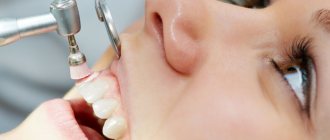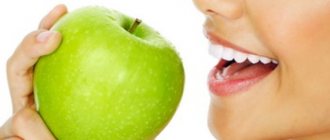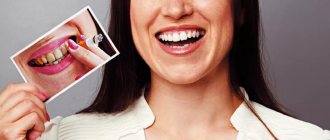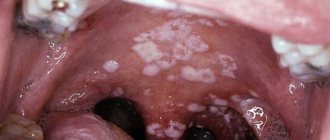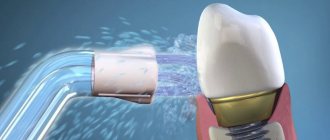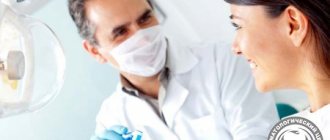What can you eat after cleansing?
After the procedure, dentists impose a number of restrictions on the patient’s eating behavior. In the first 2-3 days, foods that irritate tooth enamel are excluded from the diet: sour, hot, salty, sweet. The sensitivity of teeth after ultrasonic cleaning of stone is increased: bright tastes and temperature changes provoke pain.
Products containing dyes are prohibited. The list of what not to eat after brushing your teeth for tartar includes:
- black tea and coffee;
- colored carbonated drinks;
- chocolate;
- soy and balsamic vinegar;
- mustard and curry spices;
- red wine and grapes;
- berries (blueberries, blueberries, currants);
- red and orange vegetables;
- sweets containing dyes.
A number of products are recommended for consumption. They strengthen tooth enamel and prevent the formation of plaque and caries. Dentists advise eating dairy products in any form. Fruits and vegetables, particularly apples, reduce the amount of tartar. It is useful to drink diluted apple juice, which dissolves plaque.
We keep it clean!
Both after whitening and after professional hygienic teeth cleaning with ultrasound, tooth sensitivity increases, although in the case of ultrasound cleaning, unpleasant painful sensations do not occur as often and are not as pronounced. Therefore, in order to protect yourself from possible discomfort, you need to reconsider your usual diet and temporarily exclude hot, cold, sour, salty, and sweet dishes from the menu.
In addition, for the first week after removing soft dental deposits and removing tartar, you should stop smoking and consuming any foods and drinks that have coloring properties. The list of foods that should be excluded from the diet includes berries (blackberries, blueberries, black grapes and currants), vegetables (carrots, beets, tomatoes, pumpkin, red cabbage, etc.), drinks (black tea, coffee, chocolate , cocoa, lemonades and carbonated sweet drinks), juices with the addition of natural and artificial colors.
The specialists of our dental clinic recommend that all patients, after professional teeth cleaning, be sure to adhere to the rules of thorough oral hygiene - if possible, brush your teeth after every meal or use special hygiene devices (toothpicks, floss, etc.).
Why do you need a diet?
The teeth whitening procedure involves influencing the natural or acquired shade of enamel with a special device or means for “evaporating” the dark pigment.
Subsequently, the protective layer of enamel becomes thinner. It takes about 10–14 days for it to fully recover. If the still fragile tooth enamel can be affected by dyes, then there is a high probability of staining the surface of the teeth. To prevent this result, dentists have developed a special white diet that excludes a number of “colored” foods from the diet.
Before the procedure or after its completion, the dentist gives the patient the necessary recommendations about acceptable and prohibited products after teeth whitening. Neglecting the recommendations can cause not only darkening of the enamel, but also the development of caries.
Stages of the procedure
Ultrasonic cleaning is a serious medical procedure and is therefore performed according to an approved protocol. First, the doctor visually examines the patient, determining the degree of contamination of the enamel layer. Then - a mandatory medical history. This allows the doctor to identify possible contraindications. If the patient has hypersensitive enamel, then local anesthesia is given. After this, the cleansing itself begins. The power and other settings of the device are selected by the dentist based on the specific clinical case. The next stage is grinding the ultrasonic-treated teeth using a drill and a special attachment, or manually. In conclusion, the doctor recommends covering the enamel with fluoride varnish to strengthen it and reduce sensitivity.
Note: experts recommend that after ultrasonic removal of tartar, you undergo a professional Air Flow cleaning procedure. This will not only allow you to ideally remove remaining soft deposits, but also make your teeth visually lighter by 1 – 2 shades.
Additional care products
Dental floss, floss. Used to clean interdental spaces. After professional cleaning, use floss carefully so as not to injure the edges of the gums. Movements are directed from the gums to the cutting edge or to the chewing surface of the crown. Floss is used several times a day, as needed (after meals, after morning and evening brushing of teeth).
Irrigator. Using an irrigator helps to maintain the results of professional hygiene for a long time. The device cleans enamel with a thin stream of water under pressure. This type of cleaning removes soft plaque well and prevents the formation of tartar. The irrigator is used once a week or less. It is better if the frequency of such cleanings is determined by a doctor, taking into account the condition of the enamel.
Contraindications
Contraindications to ultrasonic teeth cleaning can be both relative and absolute. To get rid of relative ones, the patient will only need time and patience. These include:
- age up to 18 years, when the enamel of primary and permanent teeth is not yet sufficiently hard and mineralized;
- taking immunosuppressive or corticosteroid medications;
- infectious and viral diseases;
- inflammation of the oral mucosa;
- diabetes mellitus during exacerbation;
- neoplasms of various etymologies.
In addition, there are contraindications in which ultrasonic teeth cleaning is prohibited. The fact is that ultrasound vibrations affect the heart and cells, disrupt the heart rhythm and speed up metabolism. Therefore, after the procedure, the patient’s condition may worsen, and the operation of the built-in devices may be disrupted. The service is contraindicated if the patient has:
- heart pathology, pacemaker in the chest;
- asthma, epilepsy, chronic bronchitis;
- bleeding disorders;
- oncological diseases;
- tuberculosis, HIV, hepatitis.
Note. Another relative contraindication is the presence of bridges, braces and implants. The fact is that braces disrupt the natural process of cleansing the oral cavity with saliva. As a result, a soft coating appears on the enamel. In this case, dentists usually recommend Air Flow - treating teeth with an aqueous solution under pressure. If tartar has formed, you can do local ultrasonic cleaning - in the area of \u200b\u200bthe gum pockets and on the back of the teeth. You cannot directly use a scaler on the teeth around the braces: the glue on which they are attached may be damaged.
Features of the procedure during pregnancy
During pregnancy, various physiological changes occur in the female body, which inevitably affect the condition of the teeth: the acidity of saliva increases, soft plaque and tartar form. The latter not only spoils the appearance of the teeth, but can also cause various diseases. For example, when tartar is located at the edge of the gum, a periodontal pocket may form in which food debris will accumulate, which can lead to the development of periodontitis.
Ultrasonic cleaning will help prevent such problems from occurring. This cleaning is considered safe even for pregnant women. Firstly, there is no evidence of a negative effect of ultrasound on fetal development. This is why routine ultrasounds are allowed. Secondly, there is no pain during the procedure. Thirdly, the risk of trauma to the oral cavity is minimized. In addition, another advantage of the service is the speed of the procedure. As a rule, the session lasts no more than an hour.
The safest time for ultrasonic teeth cleaning is the second trimester. It is during this period that it is best to schedule all necessary dental procedures. In addition, dentists recommend refraining from additional ultrasound procedures in the first trimester of pregnancy, since during this period the main organs and systems of the fetus are formed.
Before the procedure, the patient must inform the dentist about pregnancy and tell its exact date. The fact is that during pregnancy, ultrasonic teeth cleaning is carried out only with the help of a professional scaler without the use of complex medications and anesthesia. Moreover, in this case, the doctor will be able to minimize the patient’s discomfort and give recommendations on oral care, taking into account the stage of pregnancy.
Stages of ultrasonic teeth cleaning
Stage 1. Examination of teeth to assess their condition and determine the need for anesthesia, preparation for the procedure - the dentist applies a special solution to the patient’s lips and then puts a mouth opener on it.
Stage 2. Removing dental plaque using an ultrasonic system - scaler. The water that is supplied during the session is removed from the oral cavity along with soft plaque and saliva using a special instrument.
Stage 3. Grinding and polishing enamel with brushes and pastes to give it an ideal gloss and create an anti-plaque surface. After this procedure, the enamel becomes smooth and shiny, and plaque does not appear on the surface of the teeth.
After the procedure, the dentist will give detailed recommendations for dental care and invite the patient to make an appointment in advance for repeated cleaning in 4-6 months in order to maintain the condition of the teeth and soft tissues in ideal condition.
Post-procedure care
There are special recommendations that must be followed after the procedure.
- Do not consume food or liquids containing dyes. For example, lemonades, juices, coffee, chocolate, berries, red wine, tomato juice, carrots and beets. You should avoid any pigmented foods for several days.
- Include fruits, vegetables and dairy products in your diet. The former will reduce the risk of plaque formation on the surface of the teeth, and the latter contain calcium, which is an important component of the hard tissue and enamel of teeth.
- Avoid smoking for at least a day. In the first two days, the enamel is restored after cleaning; if you smoke, it may return to a yellow tint.
- Brush your teeth with a soft brush 2 times a day after each meal. After this period, replace it with a medium-hard brush. Use a toothpaste for sensitive teeth. If you are unable to brush your teeth, you can rinse your mouth.
- Use additional oral hygiene products: floss, irrigators and dental floss. They will allow you to clean hard-to-reach places that cannot be reached with a toothbrush. Also, do not forget to clean the surface of the tongue, where a large number of bacteria also accumulate.
Follow these tips, and the results from brushing your teeth will last from 3-4 months to six months.
Possible complications
The most common complications after the procedure are inflammation of the gums, increased sensitivity of the teeth and damage to the integrity of the oral mucosa.
- Inflammation of the gums can occur due to diseases that were not cured at the time of teeth cleaning. To quickly relieve the inflammatory process, the dentist will prescribe antibiotics and suggest rinsing your mouth with herbal rinses.
- Increased sensitivity is a normal reaction of teeth to professional cleaning. However, normally it lasts no longer than one week. If the discomfort does not go away, the dentist may prescribe fluoridation of the enamel. This procedure involves applying gels and varnishes with a high concentration of fluoride and calcium to the surface of the teeth.
- Damage to enamel occurs extremely rarely; this may be due to the individual characteristics of the body or the doctor’s insufficient qualifications.
Clinical researches
An analysis of the clinical effectiveness of the use of various therapeutic and prophylactic agents of the Asepta series, carried out in Novosibirsk, at the State Budgetary Educational Institution of Higher Professional Education "Novosibirsk State University", confirmed that the line is different:
- Pronounced hygienic;
- Anti-inflammatory;
- Hemostatic property.
The study examined the effect of the products on the oral health of adolescents, patients with the most sensitive tissues and with pain in wisdom teeth. The use of pastes, balm with propolis and rinse demonstrated an improvement in clinical indicators and confirmed high efficiency in the treatment of periodontal pathology in patients of different ages.
Preventive measures
To avoid inflammatory processes in the oral cavity and relieve mild pain in the teeth, which sometimes occurs after removing tartar, you can rinse your mouth with medicinal decoctions, for example, St. John's wort, sage or even chamomile tea, which can be purchased at any pharmacy. If your teeth or gums continue to bother and hurt for a long time after hygienic cleaning, you should consult your doctor to make sure everything is okay.
Professional teeth cleaning, as well as home care, is an important and necessary procedure. By following all the doctor’s recommendations, not forgetting about the rules of hygiene, as well as regular preventive visits to the dentist and timely treatment, this is the only way you can protect your teeth from various diseases and defects. The health and beauty of your teeth depends on you, so take care of them from an early age!
How long should you stick to the diet?
It is advisable to observe the restriction on this list for at least two weeks until the protective layer of tooth enamel is restored.
In the future, consume foods with dyes, but in small quantities. If it is not possible to completely give up products with dyes, a slight deviation from the diet is acceptable, but only from the fourth day after teeth whitening. After eating foods and the list of restrictions, you should immediately brush your teeth and use a mouthwash.
The longer you manage to follow a white diet, the longer your teeth will remain snow-white. After whitening, teeth become even more sensitive to pigments, so dentists advise not to overuse products rich in dyes to maintain the effect.
Which products are safe
Dentists recommend consuming foods that are not only safe, but also healthy for your teeth. It is advisable to include foods containing minerals (calcium and fluorine) as well as vitamins (A, EC) into your daily diet. Quick fastening of the enamel will allow you to quickly return to your usual diet and favorite dishes.
Experts determine the main list of foods that can be eaten after teeth whitening at the dentist:
- any dairy products that do not contain dyes or coloring fillers;
- fruits and vegetables of dull colors;
- natural seafood;
- poultry and egg whites;
- pasta, cereals and potatoes;
- any cabbage, with the exception of red cabbage;
- bakery products;
- celery or asparagus (steamed).
When following a white diet after teeth whitening, the list of acceptable foods includes all those foods that do not have a coloring effect.
It is recommended to adhere to these particular products in order to avoid not only staining, but also damage to the enamel. Weakened enamel can react to sour, salty and spicy foods, which will “eat away” the unprotected enamel, thus provoking the development of infectious or inflammatory processes. It is also not advisable to consume rough food to prevent damage to the surface of the teeth.
How to do professional ultrasonic cleaning
Until about 10-15 years ago, dentists removed hard plaque using curettes. These are hand tools, very sharp and sharpened at the ends. It is clear that the procedure was painful and injured the enamel and gums. The layer of “living” tissue that is removed with curettes is 5-25 microns. This means that each time the enamel becomes thinner and becomes more and more sensitive.
During gentle ultrasonic cleaning, only 0.1 microns of tissue is removed. It is carried out using an ultrasound machine, which is now installed in almost every dentistry and clinic. A special scaler attachment produces silent vibration vibrations with a frequency of 16 - 45 thousand Hz. The doctor adjusts the amplitude of vibrations to remove different types of plaque, including in hard-to-reach places.
Ultrasonic waves eliminate not only visible yellow plaque, but also subgingival bacterial deposits that accumulate in periodontal pockets and trigger the inflammatory process.
Ultrasound, like a drill, crushes tartar into tiny particles. The resulting stone dust is removed using a mouth “vacuum cleaner”, then the enamel is washed with a stream of water. At the very end, the surface of the teeth is ground and polished using professional nylon brushes and abrasive pastes. The entire session lasts about 30-40 minutes. And if there are too many stones, the procedure takes about an hour.
When can I eat
There is no prohibition on eating food immediately after the procedure. You can eat almost immediately, but you will have to take into account that for the first 2-3 days you need to avoid foods that can stain your teeth.
The fact is that during professional cleaning, a protective film is removed from the surface, the restoration of which occurs in about a couple of days. However, many doctors insist on following a certain diet for a week.
A ban on certain products with coloring properties is introduced for the next 2 days after the procedure. At this time, it is better to limit yourself to drinking clean water and consuming neutral-colored foods that cannot stain the enamel of the affected tooth.
It is important to remember that after each meal you need to rinse your mouth thoroughly or brush your teeth. If there are fractions stuck between the teeth, you need to use a special thread.
What happens if you break the rule of the white diet?
Nothing catastrophic, but the effect of teeth whitening will no longer be the most ideal. Firstly, a thin film of pigment deposits will do its job - the color will darken. Secondly, if the diet requirements are violated, the very shine and sparkle of the enamel will disappear, for which many patients love whitening so much. Thirdly, the patient himself will see the difference in his teeth, and he will be offended that, for the sake of a moment of weakness or inattention, he ruined the aesthetics of a perfect smile. There is also a risk of tooth decay or inflammatory gum disease.
What is tartar and what are the causes of its appearance?
Tartar is hardened plaque that forms on the visible part of the tooth (crown) and under the gum.
The reasons for its appearance are natural, but the consequences can cause pathologies in the oral cavity.
Initially, food particles stick to the enamel. Bacteria begin to actively multiply in them. A dental plaque is formed, which looks like a soft, light plaque. Plaque can be easily removed by regular tooth brushing. But if this does not happen, then food debris, dead cells of the mucous membrane, calcium and phosphorus salts from saliva are layered on the soft plaque. They crystallize and harden.
Mineralization occurs on average within 12 days. Soft plaque turns into hard plaque. Tartar has a rough surface, onto which more and more elements “cling.”
Attention: A bacterial film on teeth forms within 16 hours. Therefore, it is important to brush your teeth at least twice a day.
Photo of plaque, male jaw
Why hard deposits form
Plaque formation is inevitable, but there are a number of factors that accelerate the process:
- Irregular hygiene. Particularly active formation of plaque and stone occurs at night: salivation decreases, a person swallows less often, and does not move the tongue. This creates a favorable environment for bacterial growth.
- Poor hygiene. Brushing teeth with horizontal movements does not affect hard-to-reach areas. The interdental spaces should be cleaned by moving the brush vertically.
- Diet. A large amount of sweet and starchy foods leads to the sticking of carbohydrates to the enamel and the proliferation of pathogenic microflora. To reduce the rate of plaque formation, you should eat fresh, firm vegetables and fruits. Chewing the fibrous pulp for a long time partially helps remove plaque.
- Physiological features. Incorrect bite and crowded teeth make proper cleaning difficult.
- Metabolic disorders. The composition of saliva changes, its bactericidal properties decrease.
- Smoking. Cigarette tar settles on the teeth, causing the formation of films and plaques.
